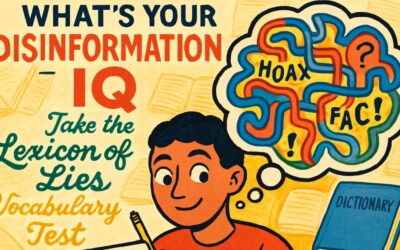Audio Episode
Introduction
Welcome to the ultimate Business English quiz for customer-facing professionals! In today’s competitive landscape, success isn’t just about what you sell—it’s about the experience you provide. Understanding and using the correct terminology is crucial for communicating effectively with colleagues, understanding business strategy, and delivering outstanding service.
This isn’t just a vocabulary test. It’s an interactive learning tool designed to immerse you in the real-world language of Customer Experience (CX) and Customer Service.
By taking this quiz, you will:
- Master Key Terminology: Learn the precise meaning of 20 essential terms that are used daily in customer-centric businesses.
- Learn in Context: Each question presents a realistic business scenario, helping you understand how these words are used in meetings, reports, and conversations.
- Receive Instant, In-depth For every option, right or wrong, you’ll get a clear explanation. You’ll learn not only the correct answer but also why the other choices are incorrect, solidifying your understanding.
- Boost Your Professional Confidence: By the end of this quiz and the lesson that follows, you’ll be able to discuss customer strategy and performance with greater accuracy and confidence.
Are you ready to prove you’re fluent in the language of customer service? Let’s dive in.
Learning Quiz
This is a learning quiz from English Plus Podcast, in which, you will be able to learn from your mistakes as much as you will learn from the answers you get right because we have added feedback for every single option in the quiz, and to help you choose the right answer if you’re not sure, there are also hints for every single option for every question. So, there’s learning all around this quiz, you can hardly call it quiz anymore! It’s a learning quiz from English Plus Podcast.
Quiz Takeaways
Hello everyone, and welcome. Whether you just aced the quiz or found a few tricky questions, you’ve taken a fantastic step toward mastering the language of modern business. The terms we just covered aren’t just buzzwords; they are the fundamental concepts that drive strategy in any company that cares about its customers. Today, we’re going to connect these dots and build a bigger picture of what a truly customer-centric business looks like.
Let’s organize our thinking into four key areas: the core philosophy, the customer’s journey, the metrics we use to measure success, and the specific actions we take.
First, the philosophy. The most important term from the quiz in this category is customer-centric. As we saw in question #8, this isn’t just about being nice; it’s a strategy where every decision begins with the question, “How will this affect our customers?” This philosophy is the foundation for everything else. It’s what drives a company to define its value proposition, which we saw in question #15. Your value proposition isn’t just a slogan; it’s your clear, honest promise to the customer. It answers: what problem are you solving for me, and why should I choose you over anyone else?
Now, let’s move to the customer’s journey. This is the entire lifecycle of their relationship with you. We need to think like an architect and map this journey out. A critical concept here is the touchpoint, from question #2. A touchpoint is any and every interaction, from seeing an ad, to the usability of your website’s user interface (UI), as we saw in question #19, to calling for support a year after purchase.
A company that manages its touchpoints well thinks about the entire process. It starts with onboarding—the process of welcoming a new customer and helping them get value from their purchase right away. A key frustration during this journey is the pain point, from question #12. This is any specific problem the customer faces, like a confusing step in the setup process. A truly customer-centric company is obsessed with finding and fixing these pain points.
The holy grail of managing the customer journey today is creating an omnichannel experience, which we explored in question #13. This is a huge step up from simply being multichannel. Multichannel means you’re available on phone, email, and chat. Omnichannel means those channels are all connected into one seamless conversation. The customer never has to repeat themselves, because the agent on the phone can see the transcript of the web chat they just had. It’s about making the customer feel known and respected.
So, how do we know if our philosophy and our journey management are actually working? We need to measure. This brings us to our third area: key metrics. In the quiz, we covered the big three.
First is customer retention from question #1, and its evil twin, churn, from questions #1 and #18. Retention is the percentage of customers you keep; churn is the percentage you lose. Attracting a new customer is five times more expensive than keeping an existing one, which is why businesses are so focused on reducing their churn rate.
Second is the Net Promoter Score or NPS, from question #6. This powerful metric comes from a single question: “On a scale of 0-10, how likely are you to recommend us?” Customers who answer 9 or 10 are “Promoters.” Those who answer 7 or 8 are “Passives,” and those who answer 0-6 are “Detractors.” Your NPS is the percentage of Promoters minus the percentage of Detractors. It’s a direct measure of customer loyalty and a strong predictor of growth. When your NPS drops, it’s a major warning sign.
Third, for service teams specifically, we have operational metrics defined by a Service Level Agreement or SLA, as we saw in question #11. An SLA might dictate that high-priority issues must be responded to in under an hour. A key metric within this is First Contact Resolution (FCR), from question #4. This measures the percentage of issues that are completely solved in the very first interaction. High FCR means your team is efficient and your customers are happy because their problems get solved quickly.
Finally, let’s talk about the specific actions and skills required to deliver on this promise. This is where the theory meets reality.
We saw the difference between being reactive and proactive in question #5. Reactive service is waiting for the phone to ring. Proactive service is anticipating a problem—like a shipping delay—and informing the customer before they even notice. This builds incredible trust.
In sales interactions, we have upselling and cross-selling, from question #7. To be clear: upselling is persuading a customer to buy a more expensive version of the same product (a bigger TV). Cross-selling is suggesting related but different products (a soundbar to go with the new TV).
When things go wrong, the skills of your support team are paramount. When a frontline agent can’t solve an issue, they need to escalate it to someone with more authority, as we saw in question #3. And during that entire interaction, the agent’s most powerful tool is empathy, from question #17. Showing a customer you genuinely understand their frustration is the first step to calming them down and building rapport (question #10), which is that harmonious connection of trust. This human touch (question #9) is something that even the best technology often struggles to replicate.
When all of this goes right—when you have a customer-centric philosophy, a seamless journey, and an empathetic team—something magical happens: customer advocacy, from question #14. Your happiest customers become your most effective marketers, telling their friends and family about their great experience. This is far more powerful than any advertisement.
By understanding this vocabulary—from the high-level strategy of being customer-centric to the on-the-ground skill of building rapport—you’re not just learning words. You’re learning the blueprint for a successful modern business.










0 Comments